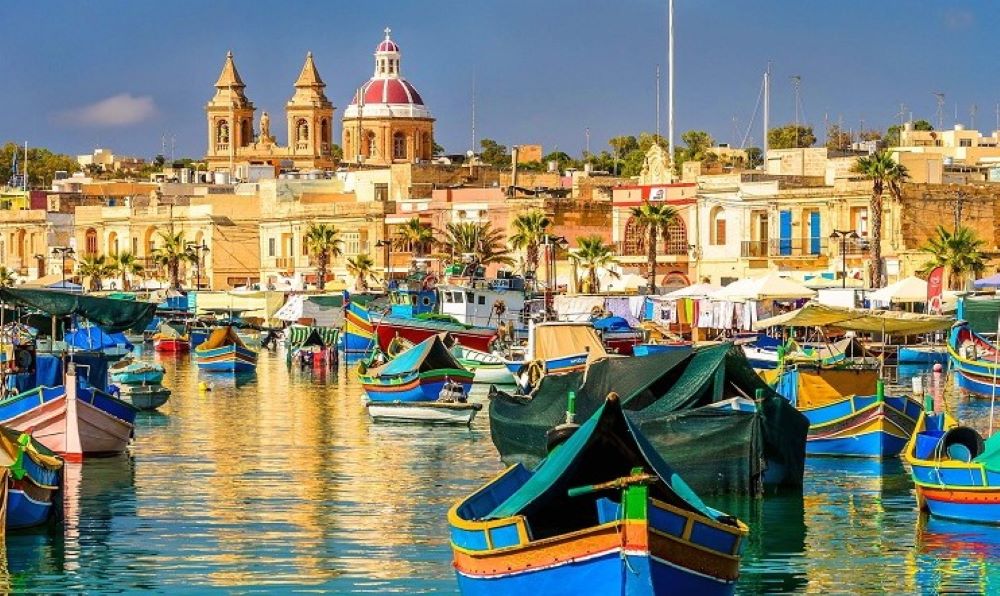 IMEX Malta |
IMEX Malta - It's a personal service. The Gateway to Europe. |

Malta With Highest Rejects on Visa Requests in Schengen Area
Last changed: July 18 2024 13:06
The average number of rejected visa applications in 2023 has been the highest recorded since there is available data for Schengen visas (2014).
According to the Schengen Statistics Portal, Schengen states rejected an average of 16.96 per cent of visa requests in 2023, up from 16.01 per cent recorded in the previous year.
Rejection rates started at 5.11 per cent in 2014, to increase to 11.76 per cent in 2020 while they peaked at 16 per cent in the last two years. In total, Schengen states have rejected a total of 1.6 million visa applications in 2023. The main nationalities that were denied visas were Turks, Algerians and Indians. In terms of numbers, France and Spain have rejected the highest number of visas – 436,893 and 251,470. However, their rejection rates are not as high – 16.7 and 18.5 per cent, respectively.
Key Points:
1. Malta's Visa Rejection Rate:
- In 2023, Malta rejected 36.81% of all visa requests, the highest among Schengen countries.
- This figure translates to 12,261 visa rejections out of all applications Malta received.
2. Overall Schengen Rejection Rates:
- The average rejection rate for Schengen visas was 16.96% in 2023.
- This is an increase from 16.01% in the previous year and is the highest since 2014.
- Rejection rates have climbed steadily from 5.11% in 2014 to over 16% in recent years.
3. Total Rejections Across Schengen Countries:
- Schengen states collectively rejected approximately 1.6 million visa applications in 2023.
- Nationals from Turkey, Algeria, and India faced the most rejections.
4. Visa Rejections by Country:
- France and Spain rejected the most visas in absolute numbers (436,893 and 251,470, respectively).
- Despite high numbers, their rejection rates were lower than Malta's, at 16.7% for France and 18.5% for Spain.
Factors Influencing Visa Rejection Rates
Several factors can influence the rejection rates for Schengen visas:
- Stringent Entry Requirements: Schengen countries have strict criteria for granting visas, which can include proof of financial means, travel insurance, purpose of travel, and return guarantees.
- Application Volumes: Countries like France and Spain receive a high number of applications due to their popularity as travel destinations, which might result in higher absolute numbers of rejections but lower percentage rates.
- Political and Economic Factors: Geopolitical tensions or economic conditions can affect rejection rates. For instance, increased scrutiny might be applied to applications from countries with high levels of emigration or security concerns.
- Country-Specific Policies: Individual Schengen countries have discretion over their visa policies, which can lead to disparities in rejection rates. Malta's high rejection rate might be due to more conservative or cautious processing standards.
- Post-Pandemic Effects: The COVID-19 pandemic affected travel policies and visa processing, potentially leading to increased rejections as countries adjust to new health and security protocols.
Implications and Impact
- Travel and Tourism: High rejection rates can affect tourism and business travel, impacting economies reliant on international visitors.
- International Relations: Visa policies can influence diplomatic relations, especially if citizens from certain countries perceive unfair treatment.
- Migration and Security: Balancing open borders with security concerns is a constant challenge for Schengen countries, affecting how visas are granted.
Malta's high rejection rate in 2023 reflects broader trends within the Schengen area of increased scrutiny and stringent visa application processes. While the absolute numbers of rejections are highest in countries like France and Spain, Malta's case highlights how smaller countries can have significant relative impacts. These trends can have wide-ranging effects on travel, international relations, and regional security dynamics.
Malta's high visa rejection rate in 2023 can be attributed to several factors. Here's an analysis of potential reasons why Malta has such a high rejection rate:
1. Strict Immigration Policies
- Cautious Approach: Malta might be adopting a more cautious approach to visa applications, aiming to ensure that applicants meet all requirements to prevent illegal immigration or overstays. This includes thorough checks on documentation and applicant backgrounds.
- National Security Concerns: As a small island nation, Malta may be particularly concerned about the security implications of visa approvals, leading to stricter scrutiny of applications.
2. Volume of Applications
- High Demand vs. Capacity: Malta might receive a high volume of applications relative to its administrative capacity to process them efficiently. This could result in higher rejection rates due to incomplete or improperly handled applications.
- Popular Tourist Destination: Malta is a popular tourist destination, which might lead to a large number of applications from people seeking entry for both tourism and other purposes, increasing the chances of rejections if the applications are not robustly justified.
3. Economic and Social Factors
- Economic Pressure: The country might be managing economic challenges, leading to a more protective stance regarding who is allowed entry. Ensuring that visa applicants can financially sustain themselves during their stay is a common criterion that might not be met by all applicants.
- Population Density: As one of the most densely populated countries in Europe, Malta might be more vigilant in controlling the flow of people into the country to manage resources and infrastructure effectively.
4. Administrative and Bureaucratic Issues
- Processing Delays and Backlogs: If there are administrative inefficiencies or backlogs, this might lead to increased rejection rates as applications are processed under pressure.
- Lack of Resources: Limited consular resources to handle visa processing efficiently might lead to stricter application of rules, causing higher rejection rates.
5. Historical Patterns and Policy Changesv
- Past Trends: Historical visa policies and changes over time can influence current rejection rates. Malta might have developed stricter policies based on past experiences with visa abuse or non-compliance.
- Policy Adjustments: Recent adjustments in immigration laws or policies might have tightened the criteria for visa approval, leading to an increase in rejections.
6. Influence of Schengen Policies
- Alignment with Schengen Policies: As part of the Schengen Area, Malta aligns its visa policies with broader Schengen regulations, which may have become more stringent over time in response to regional challenges such as migration crises.
Malta's high visa rejection rate is likely a result of a combination of these factors. While Malta benefits economically from tourism and international visits, it must balance this with security, economic stability, and resource management. Understanding these dynamics provides insight into why Malta might reject a higher percentage of visa applications compared to other Schengen countries.
Contact IMEX Malta
